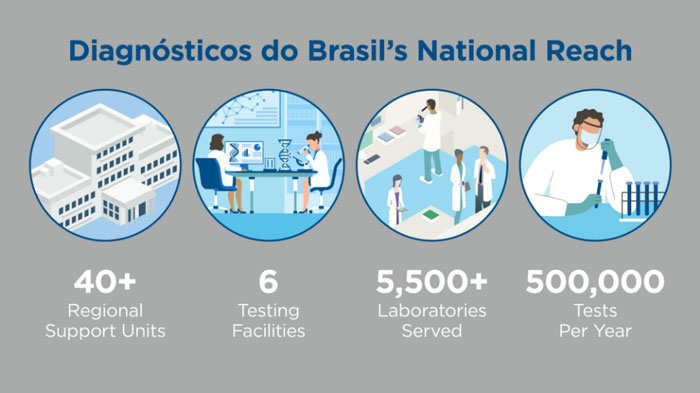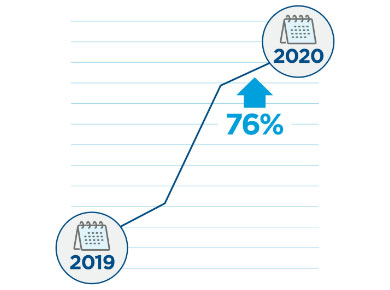Benefits of a Fully Automated Immunohematology Solution Diagnósticos do Brasil
Diagnósticos do Brasil, Brazil

Introduction
Diagnósticos do Brasil is a national clinical laboratory with an extensive logistics chain that serves over 5,500 laboratories. In October 2020, it conducted over 10 million tests and over 500,000 immunohematology tests.

Background
The start of routine decentralization
In 2016, Diagnósticos do Brasil (DB) had a plan to grow and a commitment to the idea that "being close to the client makes all the difference in laboratory support." To accomplish these goals, DB decided to decentralize its operational structure. The success of this decision showed in a 68% increase in immunohematology tests.

Challenge
Need for the automation of immunohematology tests
In 2017, it became clear that immunohematology automation was needed to maintain the quality and agility of the process while meeting the increase in demand for these blood bank tests. This was confirmed by a growth of 76% in pretransfusion testing from 2019 to 2020. Another need was tracking all the stages and recording of immunohematology results.

Solution
Increase in production capacity
The transfusion testing automation made possible by Grifols instruments provided a safe and promising margin of growth. Additionally, an internal backup system between the units was created, by offering different instruments that used the same consumables.
The scalability of Grifols products made it possible to adapt the blood bank automation to the routine of each unit by aligning the strategy of a contingency plan. DB has the capacity to release the results in any unit in a standardized manner regardless of adverse circumstances.

Results
The percentage of tests that required confirmation of immunohematology results before automation was 14.52% out of the total routine exams. Automation brought a reduction in results confirmation to 2%. The following improvements were gained thanks to automation:
- Increase in production capacity along with a better use of employees' working time.
- Reduction of the time needed for the release of results, while increasing safety.
- Use of the images of the results for promoting educational actions in customer's laboratories.
Conclusion
The added benefits after the installation of fully automated equipment were:
- Frees analysts' time for laboratory tasks other than the routine tests.
- Greater agility in results analysis, helping ensure quality and reliability.
- Safety and prompt release of reports as a result of automatic interfacing of all necessary information.
- Shares images of the tests with client laboratories, which helps them to understand how the result was determined.
Automation of the immunohematology laboratory has enabled DB to keep growing safely, allowing expansion without an impact on routine.